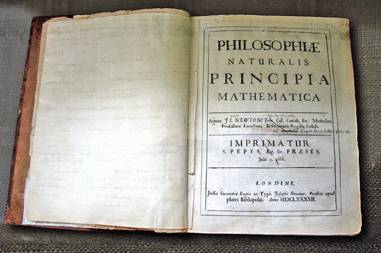Section 7.8. Ambient Findability
7.8. Ambient FindabilityThe first person to discover that light contains color was a man named Isaac who grew up on a farm in England roughly 350 years ago. By refracting sunlight with a small triangular prism he bought at Stourbridge Fair, Isaac proved that white light is not homogenous, as natural philosophers since Aristotle had believed, but holds within it the full spectrum of the rainbow. This revolutionary thinker later became Sir Isaac Newton, president of the Royal Society, father of calculus and universal gravitation, and author of Principia (Figure 7-11), by common consent the greatest scientific book ever written. Figure 7-11. Newton's Principia (Source: Wikipedia. Photograph by Andrew Dunn. Creative Commons Attribution ShareAlike 2.0 License) But it was Newton's early work on colour and the reflecting telescope that enlightens us today, for in his legacy, we learn that now and then we must look away to see. Memory and vision are linked in a dance of senses to an ambient rhythm, and in a very real sense, we all groove to the beat of ambient music, described by the Wikipedia as:
In this text, we've studied the Web through the prism of findability, and gained insight into the future of ubicomp, the evolution of belief, and the enveloping nature of culture. Our amazing journey to ambient findability is well underway. The Web has changed how we live, when we work, where we go, and what we believe. And we ain't seen nothing yet. We can glimpse what lies ahead in the eyes of a child through the lens of a Treo. A brilliant intertwingling of atoms, bits, push, pull, social, semantic, mind, and body, where what we find changes who we become. As Jorges Luis Borges promised us, in the "Garden of Forking Paths," the book and the labyrinth are one and the same. Safe travels. |
EAN: 2147483647
Pages: 87